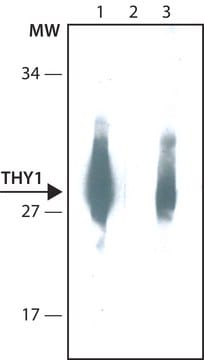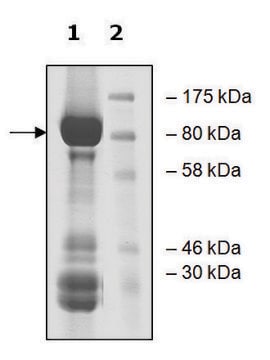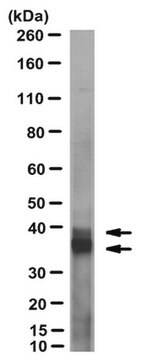SRP4835
PCNA human
recombinant, expressed in baculovirus infected Sf9 cells, ≥90% (SDS-PAGE), ≥90% (HPLC)
Synonym(e):
Cyclin, MGC8367, PCNA, Proliferating cell nuclear antigen
About This Item
Empfohlene Produkte
Biologische Quelle
human
Rekombinant
expressed in baculovirus infected Sf9 cells
Assay
≥90% (HPLC)
≥90% (SDS-PAGE)
Form
liquid
Mol-Gew.
~29.8 kDa
Verpackung
pkg of 5 μg
Verunreinigungen
endotoxin, tested
NCBI-Hinterlegungsnummer
Versandbedingung
dry ice
Lagertemp.
−70°C
Angaben zum Gen
human ... PCNA(5111)
Allgemeine Beschreibung
Biochem./physiol. Wirkung
Physikalische Form
Rekonstituierung
Hier finden Sie alle aktuellen Versionen:
Analysenzertifikate (COA)
Die passende Version wird nicht angezeigt?
Wenn Sie eine bestimmte Version benötigen, können Sie anhand der Lot- oder Chargennummer nach einem spezifischen Zertifikat suchen.
Besitzen Sie dieses Produkt bereits?
In der Dokumentenbibliothek finden Sie die Dokumentation zu den Produkten, die Sie kürzlich erworben haben.
Aktive Filter
Unser Team von Wissenschaftlern verfügt über Erfahrung in allen Forschungsbereichen einschließlich Life Science, Materialwissenschaften, chemischer Synthese, Chromatographie, Analytik und vielen mehr..
Setzen Sie sich mit dem technischen Dienst in Verbindung.








